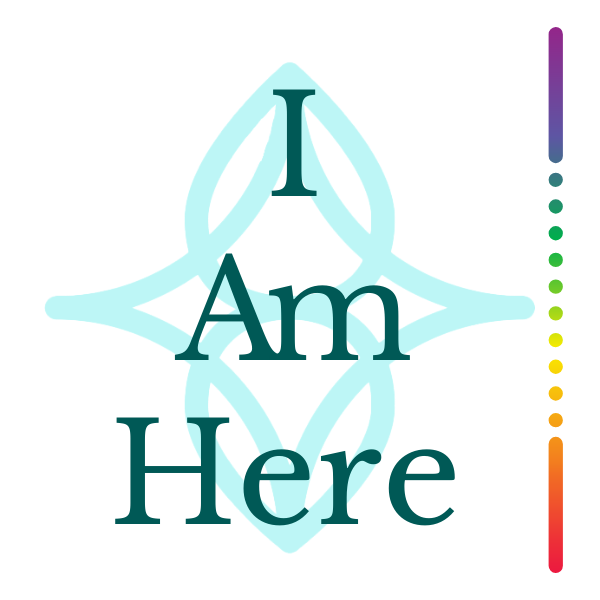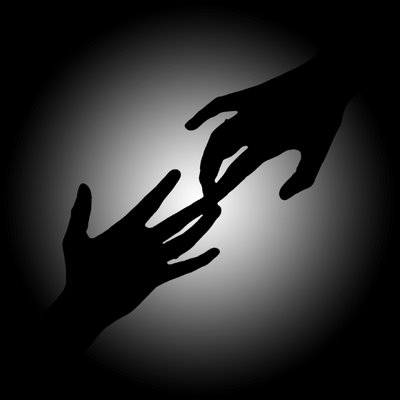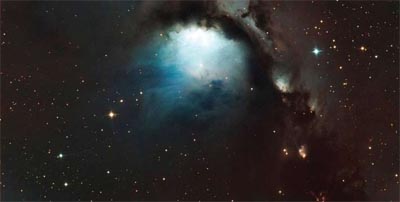The fundamental precept of nonduality – whatever its form and expression – is that essentially, we are far more than the “form” – the creature limited in time and space. Nonduality supposes a unified source, out of which all these limited and transient forms emerge, and to which they return. Through uncovering this source, we realize our true nature and can move through awakening to the unlimited depths of ourselves, to increasing freedom from fear and suffering.
Yet processes of nonduality – such as the widely known awakening to the Power of the Now – often become stalled. The “person” bites back – and a moments ecstasy in freedom rapidly reappears as a garment of person-hood – an “attainment” or a status or a position. Why is this happening and how do the teachings of I AM HERE bring the needed refinement to ease the transition out of identification with person-hood into true inner freedom?
 I AM HERE introduces a critical difference between perceptive forms of consciousness, awareness and emptiness. These three forms of perception – or windows – are actually universes in themselves, moving in intimate wedlock with each other, but nevertheless clearly distinguishable. We won’t go too much into the philosophy of experience, but to keep it simple, there is a difference between freedom of mind and freedom of heart. This difference is critical enough to ensure that if one side of the twinship is ignored, the other will not be free either.
I AM HERE introduces a critical difference between perceptive forms of consciousness, awareness and emptiness. These three forms of perception – or windows – are actually universes in themselves, moving in intimate wedlock with each other, but nevertheless clearly distinguishable. We won’t go too much into the philosophy of experience, but to keep it simple, there is a difference between freedom of mind and freedom of heart. This difference is critical enough to ensure that if one side of the twinship is ignored, the other will not be free either.
Conceptually, we can easily work on ourselves through Satsangs that expose the pure logic of the finite and infinite – using the question “Who am I”. This changing, shifting identity, hooked into a changing, composing and decomposing physical body and mind, soon collapses as a secure place to identify. It can only, ever depend on the One who is able to identify in the first place. Out of this one, the “I” arises, and to this one, the “I” returns. Experiences of awakening through a witnessing consciousness abound. Often, these describe a radical release of consciousness from identification and a sudden expansion into consciousness of consciousness – or consciousness existing independently, before and behind any conscious identification.
 For example, when we work with the Power of the Now – the past can collapse easily into the illusory – existing only in the shifting and maleable sands of memory. Likewise, the future can be dissembled in a moment – as a mental anticipation of territory which is based on nothing other than that same fallible store house of memory. Through opening the window of consciousness, we can become rapidly disentangled and empowered through pure existential freedom.
For example, when we work with the Power of the Now – the past can collapse easily into the illusory – existing only in the shifting and maleable sands of memory. Likewise, the future can be dissembled in a moment – as a mental anticipation of territory which is based on nothing other than that same fallible store house of memory. Through opening the window of consciousness, we can become rapidly disentangled and empowered through pure existential freedom.
Yet this is not enough. We are still hooked – now, not through mental identification but through the more causal layer of feeling attachment. This “person” also has feeling and emotions. It has a heart which loves, attaches, and grieves loss – irrespective of the thinking mind. To deprogram the conscious mind doesn’t reduce the longing of this heart. To “Know” unity on the level of the mind, doesn’t remove the agony of loneliness, isolation or rejection on the level of the heart.
So many seekers spiral between head and heart. They periodically crash into pain and person-hood, and sometimes with great effort, try to forcibly pull themselves out through their minds – as if they have secretly failed – as if they must still constantly strive to attain that transcendental position, or as if the world itself is so despicable that our freedom can only involve its complete rejection.
 Thoughts held in consciousness are able to dis-identify relatively quickly from the person when it is in pain. But the pain? Are we so easily able to dis-attach from that?
Thoughts held in consciousness are able to dis-identify relatively quickly from the person when it is in pain. But the pain? Are we so easily able to dis-attach from that?
When we move to the dimension of awareness – and open our sentience – or our sentience of sentience – we can notice that although we might be expanded in pure awareness, the pain is still there – following us around like an open wound in the unlimited non-dual expanse of infinity. And while buying-out of the mental story is certainly worthwhile in disabling part of the motor of personhood, it doesn’t in anyway negate this open sentient wound. We can “know” we are ultimately One. We can believe that. But does this knowing take the pain of rejection of loneliness away?
Freedom on the level of awareness works quite differently from freedom on the level of consciousness. The sentient suffering (which actually activates the same area of the pain as a physical wound) persists – it requires healing.
Healing is not a popular world in non-duality circles. How can you “heal” the very person we are trying to be free of? Isn’t that counter-intuitive? This person is anyway a total illusion, why would we make the illusion shine brighter? Why even relate to it?
 Perhaps the best answer to this is common sense. If we do not address energetic blockages or traumatic states, we will never be free, and we will never truly realize the wisdom behind non-duality. We can not heal something by refusing to acknowledge it is there. We can’t “think” away our feelings – as psychologists have shown for more than a century. Energetically, irrespective of the “person” there are these blockages in pure awareness – sentient blockages – and they have their own intelligence and life-time. Not mental time, but sentient time. If these feelings are not “felt”, then they will wait. And our ability to be free on the level of consciousness will be directly affected by our lack of inner silence, our subtle attachment, and our emotional and sentient pain.
Perhaps the best answer to this is common sense. If we do not address energetic blockages or traumatic states, we will never be free, and we will never truly realize the wisdom behind non-duality. We can not heal something by refusing to acknowledge it is there. We can’t “think” away our feelings – as psychologists have shown for more than a century. Energetically, irrespective of the “person” there are these blockages in pure awareness – sentient blockages – and they have their own intelligence and life-time. Not mental time, but sentient time. If these feelings are not “felt”, then they will wait. And our ability to be free on the level of consciousness will be directly affected by our lack of inner silence, our subtle attachment, and our emotional and sentient pain.
Healing the pain that manifests in our feeling experience – regardless of whether it is of this person or the unified field – is a fundamental part of living freedom. Ignoring suffering is to make precisely that movement which nonduality tries to avoid – the movement into the illusion of separation.
Sometimes the pain – like an open wound – is to potent to treat at once. Sometimes, all we can do is breath through it mindfully. Breathing relativizes the suffering, and allows an expansion in which the pain is not the only focus of the mind (breathing is also happening).
When there is a possibility, it a good technique to use an additional circulation through perception. We can “feel” the pain – where it is in the body – taste it, or sample it. And then, if we are able, move our attention to a part of our body where the feeling is pleasant – such as the face, feet or hands. After totally immersing ourselves in the comfortable area we can move back to the pain. In this sentient circulation, we are able to observe a loosening of state and and a softening of the pain.
At some stage, it could be possible to open the loving observer of awareness and observe the phenomena of the pain from the inside out – and perhaps to observe its healing.
All these methods can be used to liberate awareness of the blocks of suffering – thus giving a stronger ground for the increasing, integrated freedom of consciousness. We don’t need to do them all at once – suffering will wait until we come to take it home.
In working with sentient pain – it is important that the mind and consciousness work as a support. Not “believing” in the truth of any voices that come forward (eg. He hates me) and not “believing” in the person that is under attack. Below is an example of working with the pain of rejection.
Sara focusses on the feeling of the pain in her upper tummy. When it feels uncontainable, we move to the soft feeling of her feet resting on the ground. When she is established there, we move back to the pain in her upper tummy, which is already slightly less potent. Then a voice comes forward in her consciousness.
Voice: “He hates me.”
Answer: “I don’t believe you.”
Voice: “Everybody hates me.”
Answer: “Everybody wants you to be free of the illusion of you.”
The pain in Sara’s belly has moved upwards to the upper chest area. A new layer of pain is emerging, connected with shame and early child-hood. The process of healing and liberation of the identification and attachment to the limited state of person-hood continues – on behalf of the individual and on behalf of the whole – which at a certain stage is revealed as one and the same.



